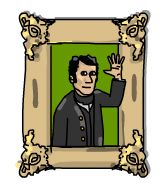
This is a a pictorial database designed by Northumberland Grid for Learning
The database can be used to support the teaching of the use of ICT to find information.
It is also a useful non - fiction resource for use in Literacy.
There are currently records on 65 animals, grouped according to habitat and listed in alphabetical order in the index.
It can be explored in three ways: search using menus, search using the index, search using key words
For each animal in the database there is a simple description with a large image.
Clicking on the 'Find Out More' button gives access to more detailed information.
All the images and fact files about the animals are available as Word files which can be printed out or adapted as necessary by the teacher.
 A game using coordinates in four quadrants with both x and y axes ranging from -5 th +5. The sutdents are offered a point on the grid and have to type in its coordinates. Feedback is instant. A great resource for teachers to use with a whole class and an interactive whiteboard
A game using coordinates in four quadrants with both x and y axes ranging from -5 th +5. The sutdents are offered a point on the grid and have to type in its coordinates. Feedback is instant. A great resource for teachers to use with a whole class and an interactive whiteboard














































